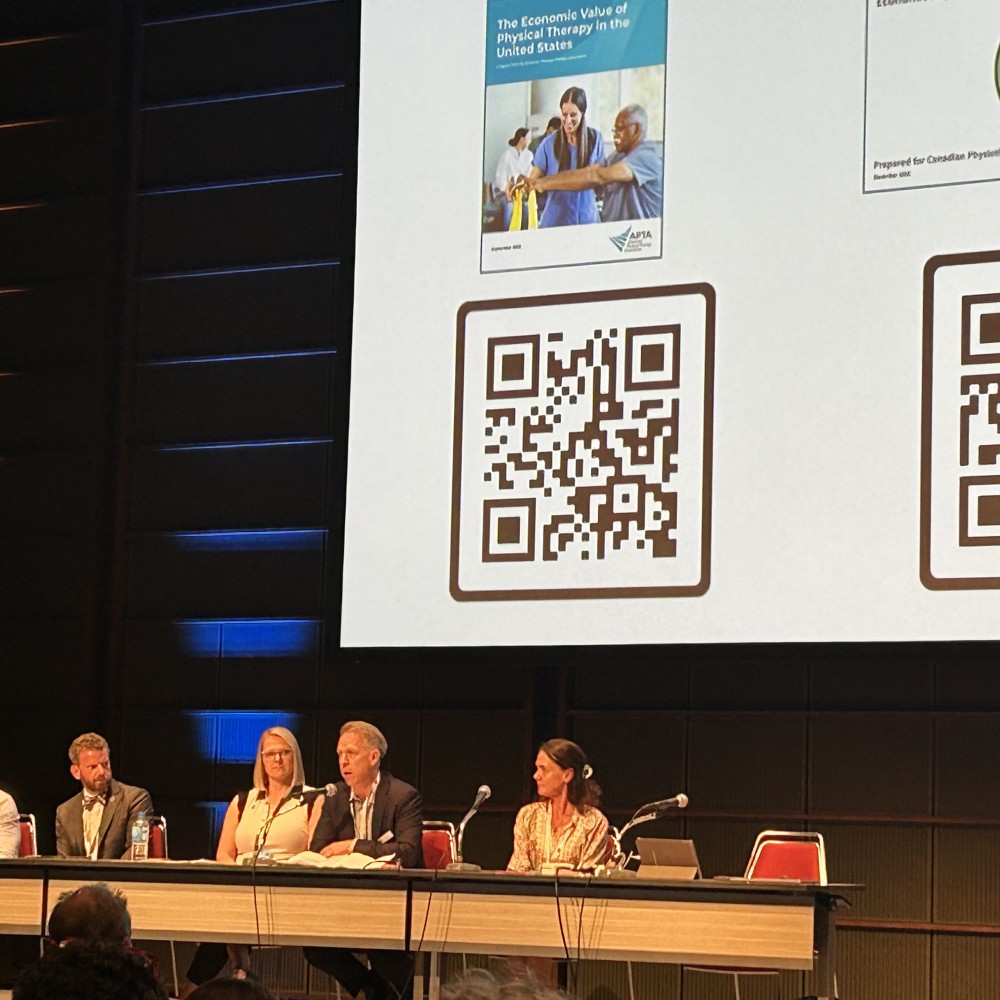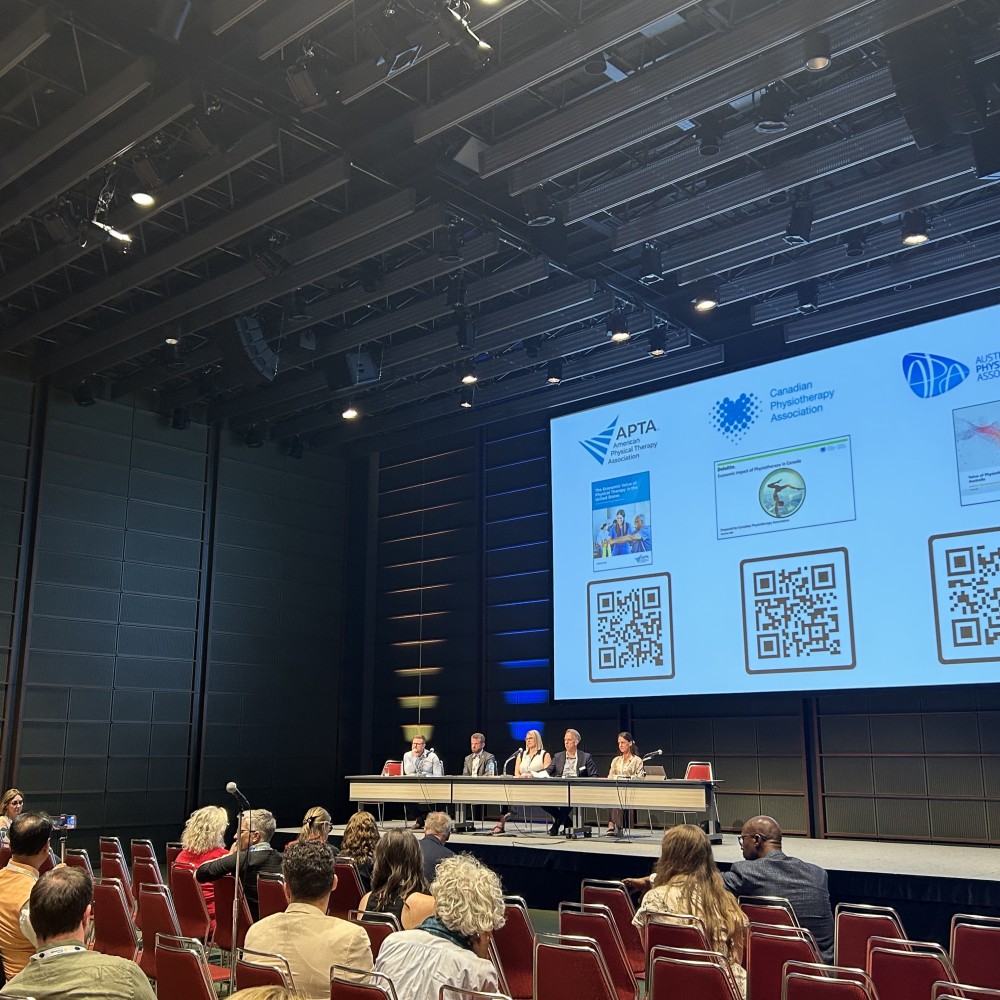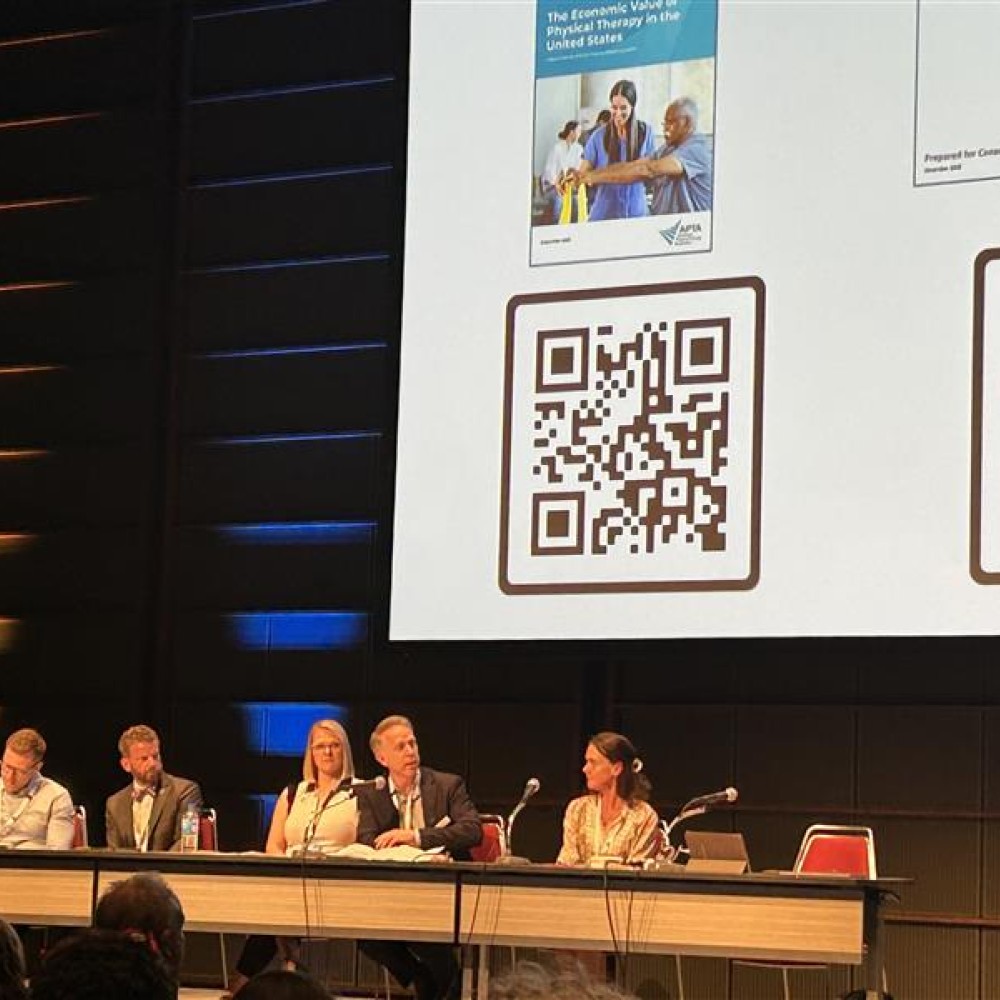As healthcare systems face rising costs and increasing demand, physiotherapy must prove its value not only to patients, but to funders and decision-makers. A session at the World Physiotherapy Congress 2025, brought together leaders from Australia, Canada, the United Kingdom, Ireland and the United States to ask: how can physiotherapy demonstrate its system-wide impact?
The session, Shaping the future of physiotherapy through financial analysis and health economics, was chaired by World Physiotherapy president Michel Landry and the panel explored how economic evidence, national modelling and health policy engagement are shaping the profession’s future.
"Policymakers want more than clinical outcomes. They want to know what value we deliver across the whole health system," said Michel. He urged the profession to think bigger: "We need to move away from zero-sum arguments and speak the language of investment. Physiotherapy isn’t a cost, it’s a system advantage."

Rik Dawson, president of the Australian Physiotherapy Association (APA), echoed this message, highlighting the APA’s Value of Physiotherapy report. Drawing from new modelling, he illustrated how targeted investment in physiotherapy could reduce hospital admissions, prevent falls and boost workforce participation among older Australians. "We need to change the way policymakers see prevention," said Rik. "Only one per cent of Australia’s health budget goes to prevention. It’s time for that to change."
The Canadian and American associations have also produced national reports to quantify the value of physiotherapy and return on investment. These studies have helped shift government thinking, leading to policy changes, improved funding access and reversal of measures such as prior authorisation requirements in the United States.
Ashley James from the Chartered Society of Physiotherapy (UK), Allison Stene from the Canadian Physiotherapy Association, Fran Theron from the Irish Society of Chartered Physiotherapists, explored how national systems are constrained by workforce shortages, inequitable funding and lack of integration. Each country had success stories—from virtual fracture clinics in Ireland to models scaling up rehabilitation capacity in Canada—but all stressed the importance of embedding physiotherapy into broader health policy and planning.
A recurring message was the need for better data—both to demonstrate impact and to drive decisions. Speakers highlighted gaps in information systems, inconsistent metrics and the limited integration of economic modelling in many countries. There was strong agreement that physiotherapy must become fluent in the language of health economics. That means integrating health economists into research projects, involving clinicians in data collection and moving from pilot programs to scalable, measurable models of care.
The call to action was clear: if physiotherapy is to shape its future, it must prove its value not just to patients, but to funders, planners and governments. As Michel summarised, physiotherapy’s success will depend not only on compelling stories, but on strategic data and system-level impact.





